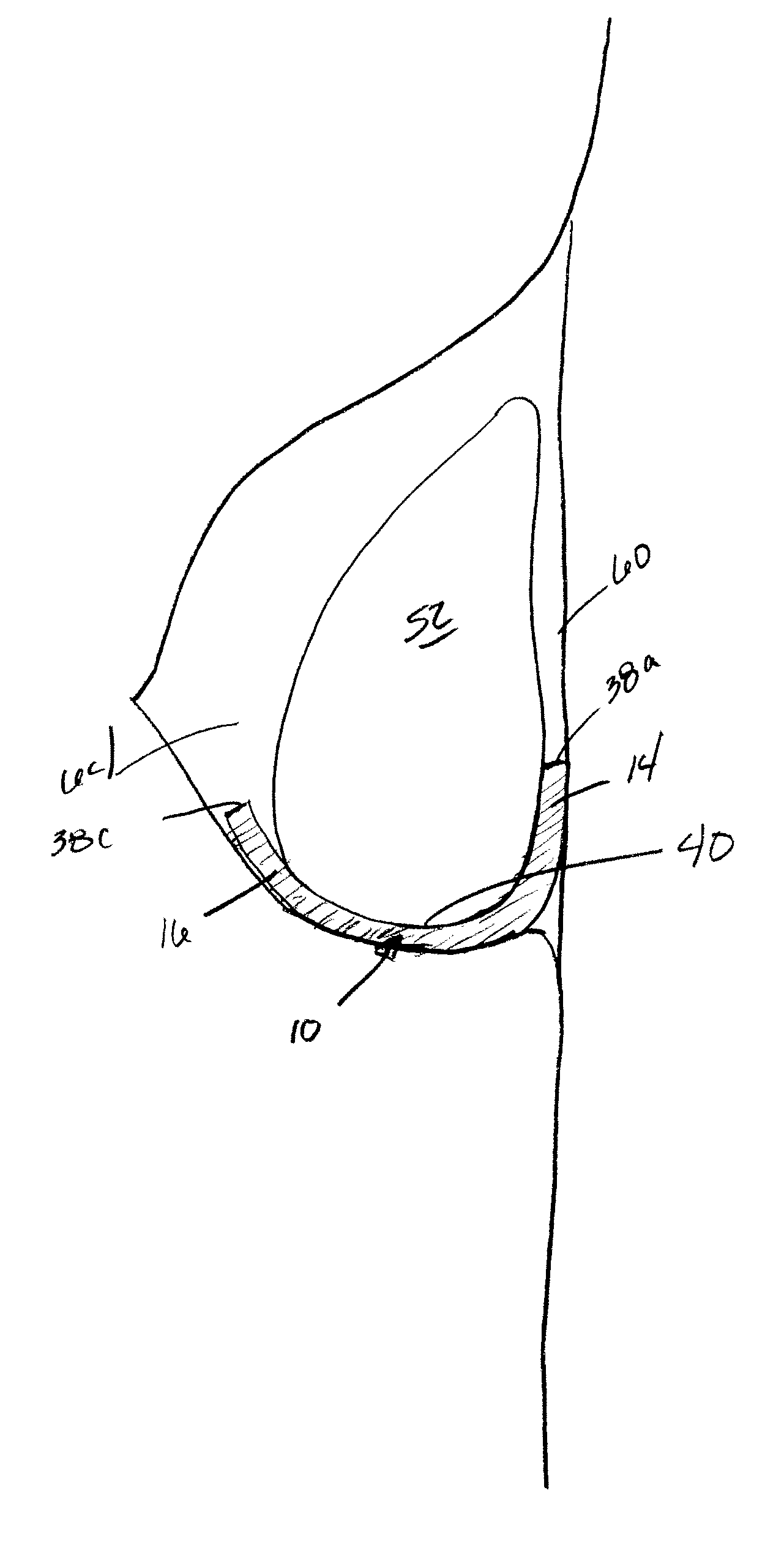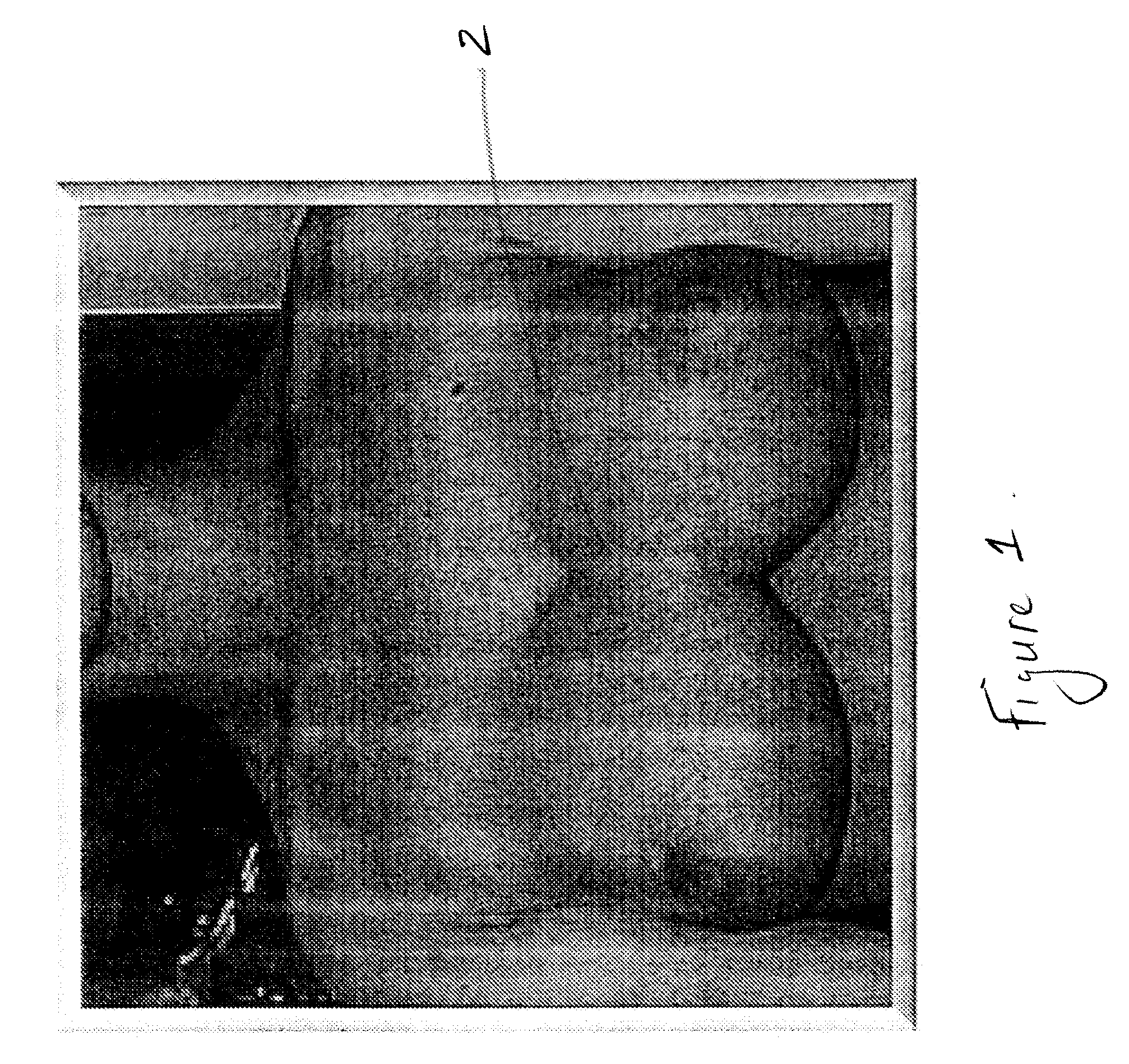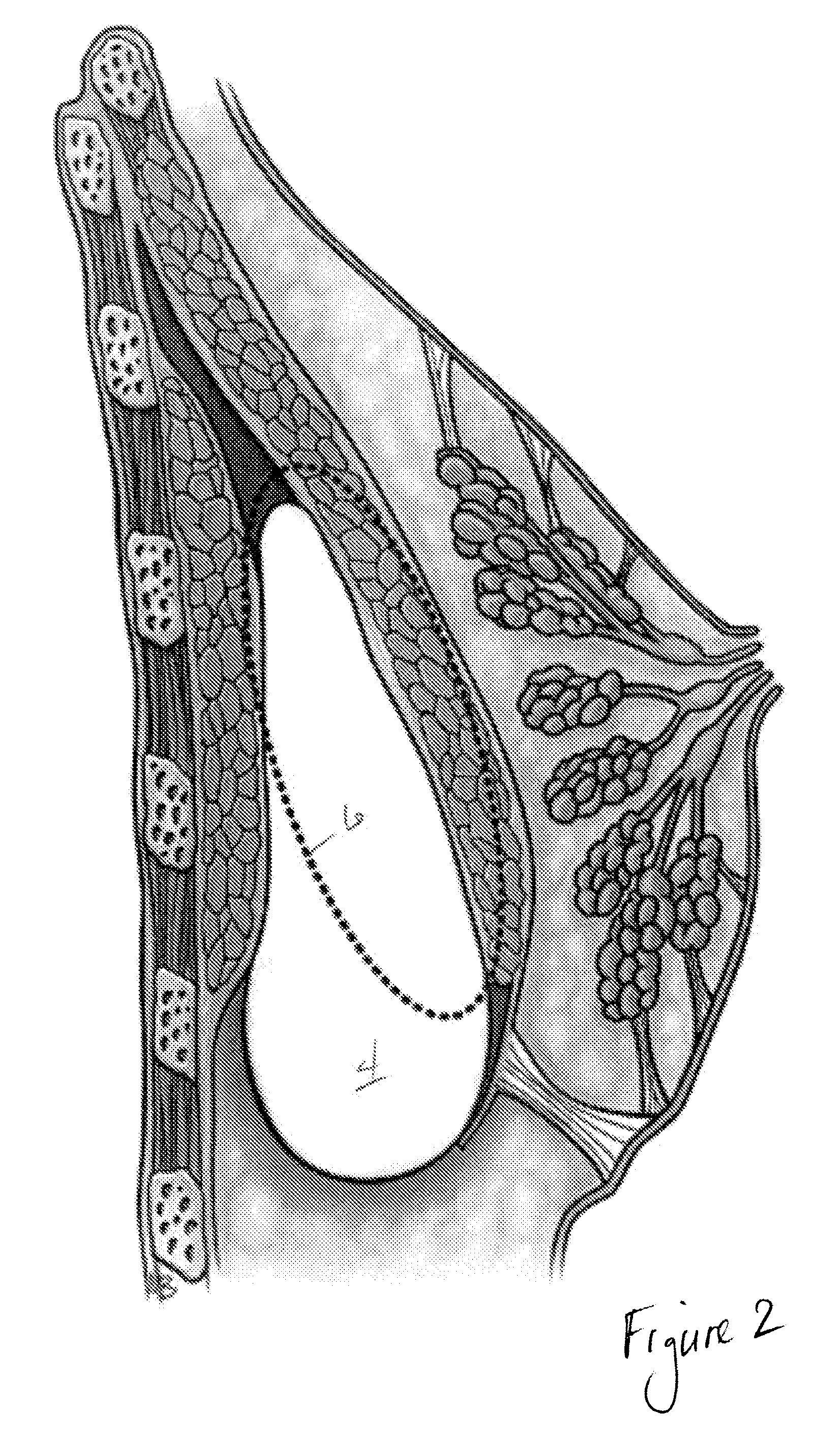Implantable prosthesis for positioning and supporting a breast implant
- Summary
- Abstract
- Description
- Claims
- Application Information
AI Technical Summary
Benefits of technology
Problems solved by technology
Method used
Image
Examples
Embodiment Construction
[0035] The current innovation calls for the development of an implantable prosthesis in the form of a support sling for use in cosmetic and reconstructive breast surgery. This implantable prosthesis would not be used to hold native breast tissue in place but rather to minimize the amount of implant displacement. Most implants placed for reconstruction and augmentation are placed in the sub-muscular position. From this position, an implantable prosthesis placed medially, laterally, or inferiorly would be in contact solely with the muscles of the chest wall and would not be directly in contact with breast parenchyma.
[0036] The implantable prosthesis of the present invention can be utilized during corrective procedures to reposition a malpositioned implant or as a prophylactic measure during procedures wherein the implant is initially placed and positioned within the patient. As is shown, in FIGS. 5 and 6, the implantable prosthesis 10 comprises a sheet 12 of prosthetic material, whic...
PUM
 Login to View More
Login to View More Abstract
Description
Claims
Application Information
 Login to View More
Login to View More - R&D
- Intellectual Property
- Life Sciences
- Materials
- Tech Scout
- Unparalleled Data Quality
- Higher Quality Content
- 60% Fewer Hallucinations
Browse by: Latest US Patents, China's latest patents, Technical Efficacy Thesaurus, Application Domain, Technology Topic, Popular Technical Reports.
© 2025 PatSnap. All rights reserved.Legal|Privacy policy|Modern Slavery Act Transparency Statement|Sitemap|About US| Contact US: help@patsnap.com



